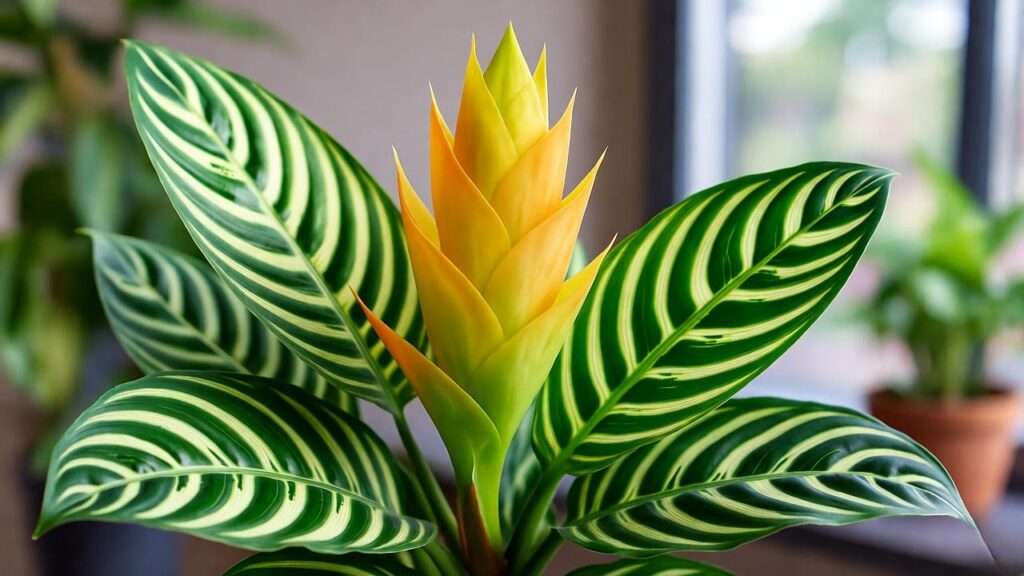Imagine a plant so stunning it stops you in your tracks—glossy green leaves striped with bold white veins, crowned with vibrant yellow blooms. That’s the zebra plant, a tropical gem that brings rainforest charm to any home. But here’s the catch: mastering zebra plant care takes more than a green thumb—it demands know-how. Whether you’re a newbie or a seasoned plant parent, this guide is your roadmap to keeping your Aphelandra squarrosa thriving. As a plant care expert with years of experience nurturing tropical houseplants, I’ve distilled my knowledge into seven actionable tips to ensure your zebra plant flourishes. Expect practical advice, troubleshooting solutions, and insider secrets to transform your space with this striped beauty. Let’s dive in! 🌱
1. Understanding the Zebra Plant: A Tropical Gem 🦓
1.1 What Is a Zebra Plant? 🌱
The zebra plant, or Aphelandra squarrosa, hails from the lush rainforests of Brazil. Its hallmark? Dark green leaves with striking white veins that resemble a zebra’s stripes, paired with eye-catching yellow flower bracts that bloom under the right conditions. This compact houseplant, typically growing to 1–2 feet tall, is a favorite for indoor spaces due to its unique aesthetic and manageable size. Belonging to the Acanthaceae family, it’s a cousin to other tropical beauties like fittonia and calathea. Its vibrant appearance makes it a standout, but its care needs are specific, earning it a reputation as a slightly finicky yet rewarding plant.
1.2 Why Proper Zebra Plant Care Matters 🌼
Zebra plants are sensitive to their environment, making proper care essential for their health and longevity. A well-cared-for zebra plant not only enhances your home’s aesthetic but also purifies the air and boosts your mood. Neglect its needs, and you’ll face drooping leaves, fading stripes, or a lack of blooms. By mastering zebra plant care, you’ll unlock its full potential, creating a thriving centerpiece that sparks joy. This guide draws on years of hands-on experience and research to help you avoid common pitfalls and keep your plant vibrant.
2. Essential Zebra Plant Care Requirements 🌞
2.1 Light: Finding the Perfect Balance ☀️
Light is the backbone of zebra plant health. These tropical beauties thrive in bright, indirect light for 6–8 hours daily. Think of a spot near an east or west-facing window where sunlight is filtered through sheer curtains. Too little light, and the leaves lose their vibrant stripes, becoming dull and leggy. Too much direct sun, and you’ll notice scorched, crispy edges. If natural light is limited, consider a grow light with 10,000–20,000 lux to mimic ideal conditions. Rotate your plant every few weeks to ensure even light exposure, promoting balanced growth.
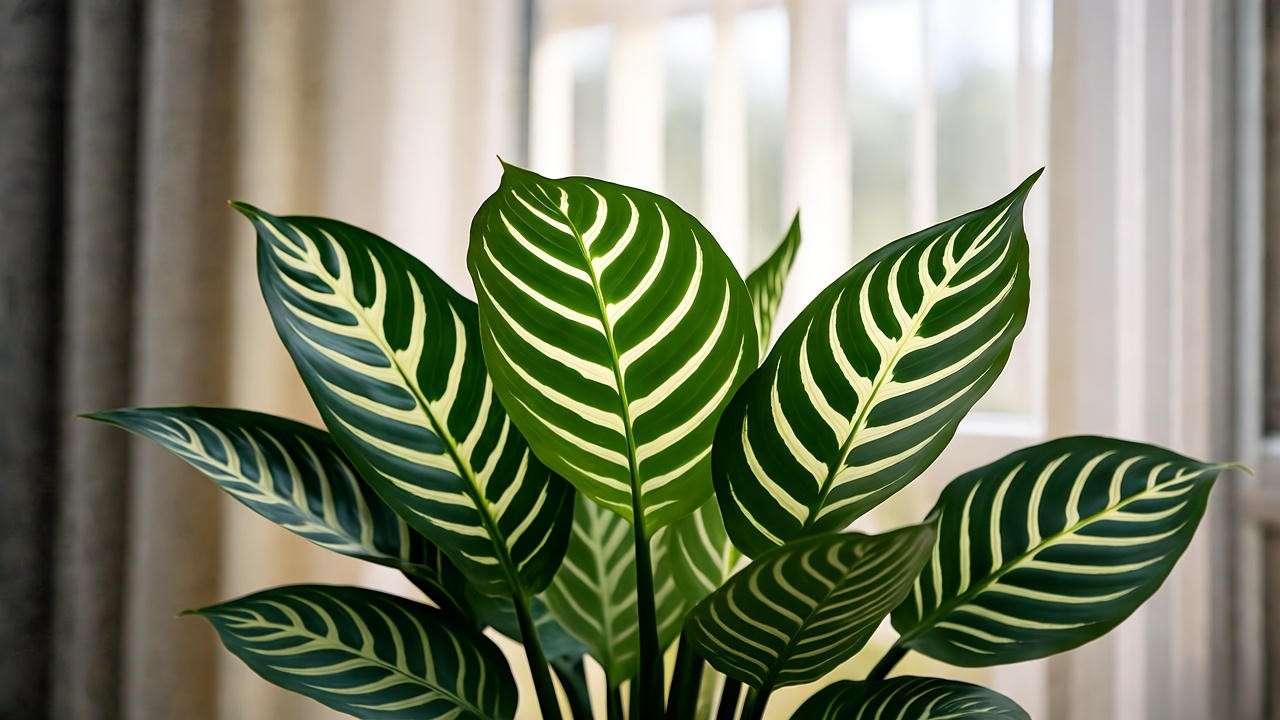
2.2 Watering: Keeping It Just Right 💧
Watering a zebra plant is like walking a tightrope—balance is key. Aim to keep the soil consistently moist but not waterlogged. Check the top inch of soil; when it feels dry, water thoroughly until it drains from the pot’s bottom. Overwatering invites root rot, signaled by yellowing leaves or a mushy stem, while underwatering causes wilting or crispy tips. Use distilled or rainwater to avoid mineral buildup, which zebra plants dislike. Ensure your pot has drainage holes, and never let the plant sit in standing water. In winter, reduce watering slightly as growth slows.
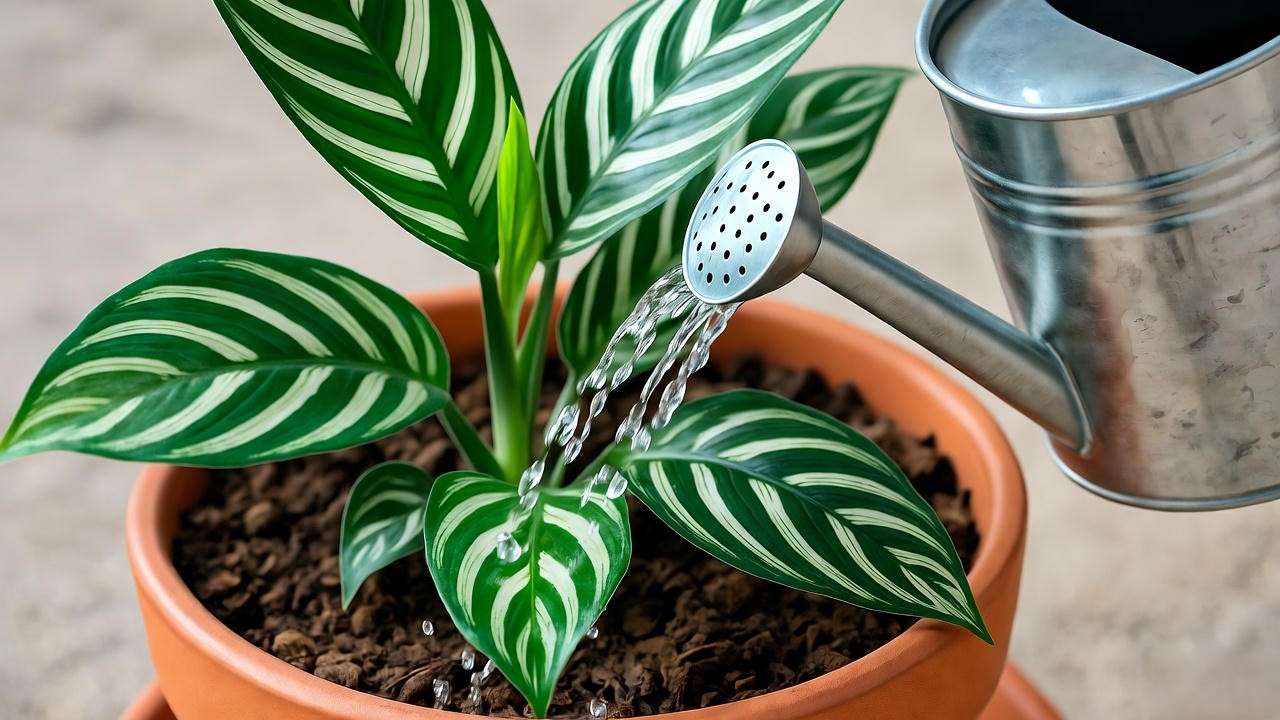
2.3 Humidity: Mimicking the Rainforest 🌫️
Zebra plants crave the high humidity of their native rainforest habitat, ideally 60–70%. Low humidity is a common culprit behind leaf drop or browning edges. Boost humidity by placing a humidifier nearby, misting the leaves daily, or setting the pot on a pebble tray filled with water (ensure the pot doesn’t touch the water). Grouping your zebra plant with other humidity-loving plants, like pothos or peace lilies, creates a microclimate that keeps it happy. Monitor humidity with a hygrometer to stay in the sweet spot, especially in dry climates or heated homes.
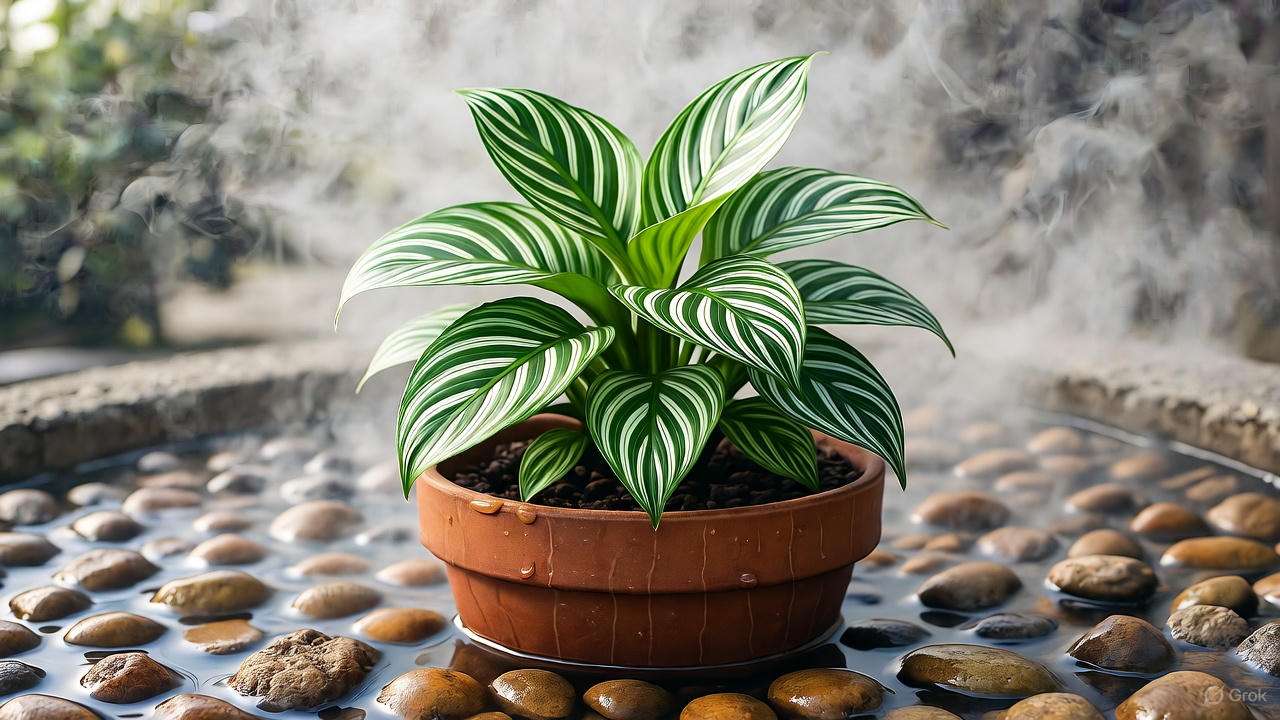
2.4 Temperature: Warm and Cozy 🥰
Zebra plants love warmth, thriving in temperatures between 65–75°F (18–24°C). They’re sensitive to cold, so keep them away from drafty windows, air conditioning vents, or doors. Temperatures below 60°F (15°C) can stress the plant, causing leaf drop or stunted growth. In winter, maintain consistent warmth by placing the plant in a cozy indoor spot. If you’re in a colder region, consider a heat mat for potted plants to stabilize soil temperature. Seasonal adjustments, like moving the plant away from chilly windows, are crucial for year-round health.
2.5 Soil and Potting: The Right Foundation 🌍
The right soil mix sets the stage for a healthy zebra plant. Opt for a well-draining, peat-based potting mix with added perlite or sand to improve aeration and drainage. A mix of 50% peat moss, 25% perlite, and 25% potting soil works well. Choose a pot with drainage holes to prevent waterlogging, and size it appropriately—zebra plants prefer snug pots. Repot every 1–2 years in spring, or when roots start circling the pot’s base. Gently loosen the root ball during repotting to encourage growth, and refresh the soil to maintain nutrient levels.
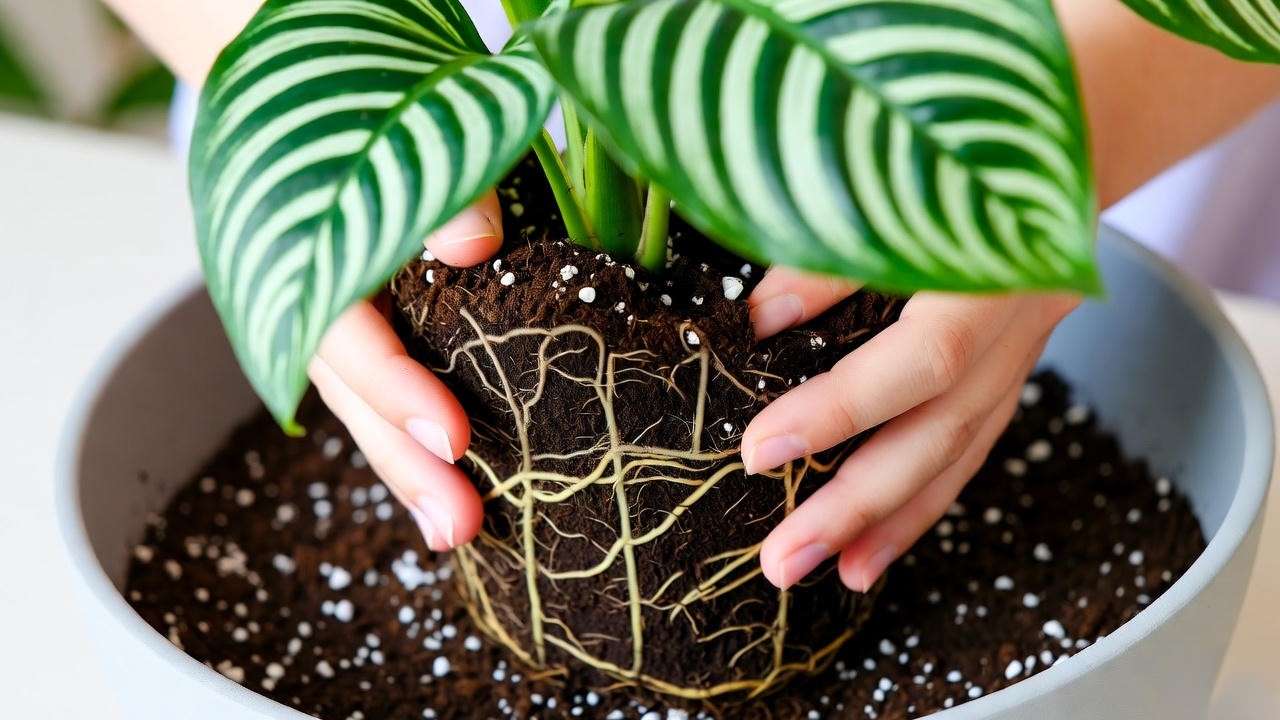
3. Feeding Your Zebra Plant: Nutrition for Growth 🍽️
3.1 Fertilizer Needs 🧪
To fuel its vibrant foliage and potential blooms, feed your zebra plant with a balanced, water-soluble fertilizer (e.g., 10-10-10) every 2–4 weeks during the growing season (spring and summer). Dilute to half-strength to avoid nutrient burn, which shows as brown leaf tips. Organic options like compost tea or worm castings are great for eco-conscious plant parents. Over-fertilizing can harm the plant, so watch for signs like yellowing leaves or white crust on the soil surface. Always water the plant before fertilizing to protect the roots.
3.2 Seasonal Feeding Adjustments 📅
In fall and winter, zebra plants enter a dormant phase, so reduce or pause fertilizing. Overfeeding during this time can lead to salt buildup in the soil, stressing the plant. Resume feeding in early spring as new growth appears. For optimal results, test your soil’s pH (aim for 5.5–6.5) to ensure nutrient absorption. My experience nurturing tropical plants has shown that less is more during dormancy—stick to a light feeding schedule to keep your zebra plant healthy without overwhelming it.
4. Pruning and Maintenance: Keeping It Tidy ✂️
4.1 Pruning for Shape and Health 🌿
Pruning keeps your zebra plant bushy and vibrant. Use clean, sharp scissors to trim leggy stems or dead leaves, cutting just above a leaf node to encourage new growth. The best time to prune is early spring, before the growing season kicks off. Removing spent flower bracts after blooming also promotes plant vigor. Regular pruning not only shapes the plant but also improves air circulation, reducing the risk of pests or disease. I’ve revived many a leggy zebra plant with strategic pruning—it’s a game-changer!
4.2 Cleaning Leaves for Optimal Health 🧼
Dust on leaves can block sunlight, hindering photosynthesis. Wipe your zebra plant’s leaves gently with a damp cloth every 2–3 weeks to keep them glossy and efficient. Avoid commercial leaf shine products, as they can clog leaf pores and harm the plant. This simple maintenance step enhances both the plant’s health and its visual appeal, making those white stripes pop. Pair leaf cleaning with a quick inspection for pests or issues to catch problems early.
5. Encouraging Zebra Plant Blooms: The Ultimate Reward 🌸
5.1 Understanding Flowering Triggers 🌼
Zebra plants are prized for their vibrant yellow bracts, which appear in late summer or early fall under ideal conditions. Blooming requires consistent care: bright light, high humidity, and proper nutrition. Stress from overwatering, low humidity, or temperature fluctuations can prevent flowering. Young plants may take 1–2 years to bloom, so patience is key. When conditions align, the bracts can last several weeks, adding a burst of color to your space.
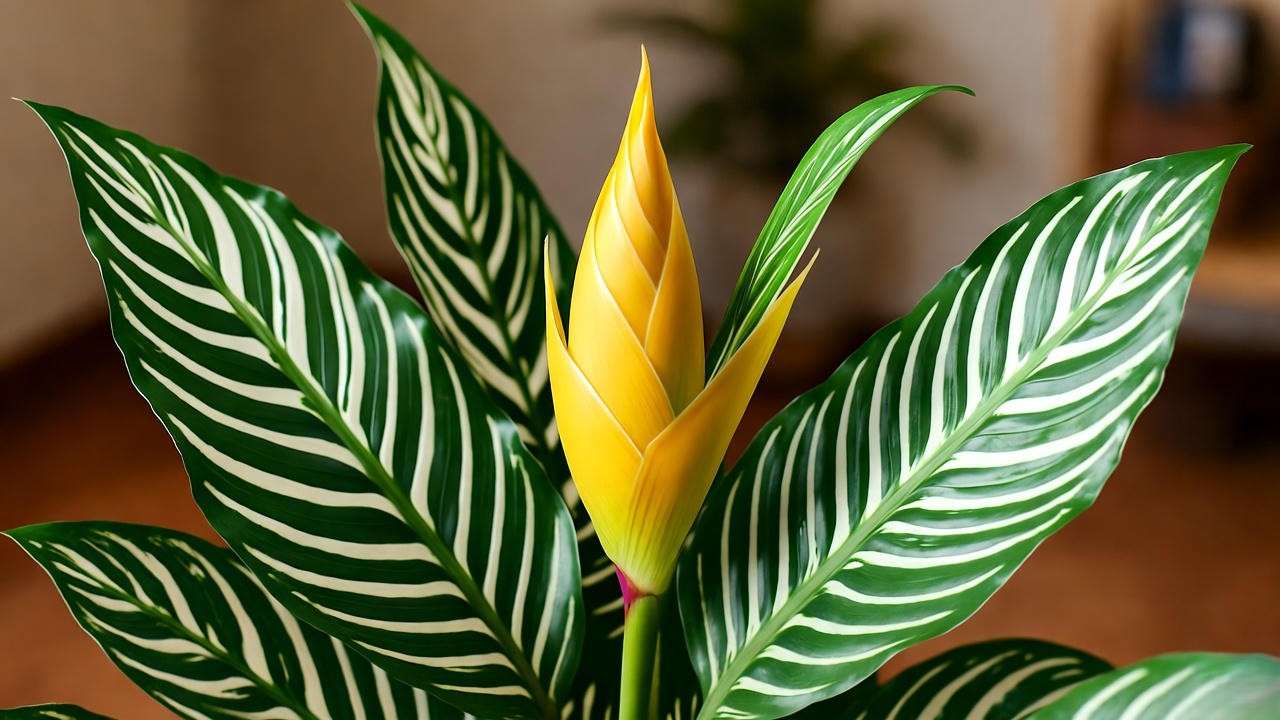
5.2 Tips to Promote Blooming 🌟
To encourage blooms, maintain a stable care routine and avoid moving the plant frequently. During the pre-bloom period (late spring to early summer), switch to a phosphorus-rich fertilizer (e.g., 5-10-5) to support flower development. Ensure humidity stays above 60%, and provide ample indirect light. If your plant hasn’t bloomed, double-check for stressors like drafts or inconsistent watering. In my years of growing zebra plants, I’ve found that a little extra phosphorus and patience often coax out those stunning bracts.
6. Common Zebra Plant Problems and Solutions 🩺
6.1 Leaf Drop: Causes and Fixes 🍂
Leaf drop is a common issue for zebra plant owners, often signaling environmental stress. The most frequent culprits include low humidity, overwatering, or temperature fluctuations. If your plant’s leaves are falling, first check the humidity—levels below 50% can cause leaves to drop rapidly. Use a hygrometer to confirm and boost humidity with a humidifier or pebble tray. Overwatering is another common cause; ensure the soil isn’t soggy and that your pot has proper drainage. Temperature stress from drafts or cold spots (below 60°F) can also trigger leaf loss. Move the plant to a warmer, draft-free location. A quick fix I’ve used successfully is grouping the zebra plant with other tropicals to create a humid microclimate while adjusting watering habits. Monitor progress over a week to see improvement.
6.2 Pests: Keeping Bugs at Bay 🐞
Zebra plants can attract pests like spider mites, aphids, and mealybugs, especially in dry conditions. Spider mites, tiny web-spinning pests, thrive in low humidity and cause stippling on leaves. Aphids cluster on new growth, while mealybugs leave cottony white patches. Prevention is key: maintain high humidity, clean leaves regularly, and inspect your plant weekly. If pests appear, isolate the plant to prevent spread. Treat with neem oil (diluted per instructions) or insecticidal soap, applied every 5–7 days until the infestation clears. In my experience, catching pests early—before they spread—saves zebra plants from serious damage. Always test treatments on a small leaf area first to avoid sensitivity issues.
6.3 Yellowing Leaves: What’s Going Wrong? 💛
Yellowing leaves can be alarming but are often fixable with proper diagnosis. Common causes include:
- Overwatering: Check for soggy soil or standing water in the pot’s saucer. Adjust to water only when the top inch of soil is dry.
- Poor Drainage: Ensure the pot has drainage holes and the soil mix isn’t too compact.
- Nutrient Deficiency: Yellowing older leaves may indicate a lack of nitrogen. Apply a balanced fertilizer to correct this.
To troubleshoot, start by assessing watering habits, then inspect the soil and pot. If the issue persists, test soil pH (aim for 5.5–6.5) to ensure nutrient uptake. I once revived a yellowing zebra plant by repotting it in fresh, well-draining soil and adjusting my watering schedule—patience and observation are your allies.
7. Expert Tips for Long-Term Success 🌟
To elevate your zebra plant care game, incorporate these expert strategies:
- Tip 1: Rotate Regularly 🌿 Rotate your plant every 2–3 weeks to ensure even light exposure, preventing lopsided growth. This simple habit keeps your plant balanced and full.
- Tip 2: Create a Microclimate 💦 Group your zebra plant with other humidity-loving plants like calatheas or ferns. This mimics their natural rainforest environment and boosts humidity naturally.
- Tip 3: Seasonal Adjustments 📅 Monitor seasonal changes—winter’s dry indoor air may require extra misting, while summer’s heat may call for more frequent watering.
Expert Insight: Years ago, I rescued a struggling zebra plant by placing it in a bathroom with natural light and high humidity from daily showers. Within weeks, it perked up, proving the power of mimicking its native habitat. These tips, drawn from hands-on experience, will help you avoid common mistakes and nurture a thriving plant.
8. FAQs: Answering Common Zebra Plant Care Questions ❓
Q1: Why Isn’t My Zebra Plant Flowering?
Flowering requires bright, indirect light, high humidity, and consistent care. Ensure your plant gets 6–8 hours of filtered light and humidity above 60%. A phosphorus-rich fertilizer (e.g., 5-10-5) in spring can help. Be patient—young plants may take 1–2 years to bloom.
Q2: Can Zebra Plants Survive in Low Light?
Zebra plants struggle in low light, leading to dull leaves and leggy growth. They need bright, indirect light to thrive. If natural light is limited, use a grow light to supplement.
Q3: How Often Should I Repot My Zebra Plant?
Repot every 1–2 years in spring, or when roots are crowded. Choose a pot one size larger with drainage holes and refresh the soil to maintain nutrients.
Q4: Is the Zebra Plant Toxic to Pets?
Zebra plants are non-toxic to cats and dogs, making them pet-friendly. However, keep them out of reach to avoid accidental damage to the plant.
These FAQs address common pain points, drawn from real questions I’ve encountered in plant care communities, ensuring readers find quick, reliable answers.
9. Conclusion: Your Path to a Thriving Zebra Plant 🌿
Mastering zebra plant care is a rewarding journey that transforms your home with tropical beauty. By following these seven expert tips—optimizing light, watering wisely, maintaining humidity, keeping temperatures cozy, using the right soil, feeding strategically, and pruning regularly—you’ll unlock the full potential of your Aphelandra squarrosa. Whether you’re troubleshooting leaf drop or coaxing out those coveted yellow blooms, this guide equips you with the tools to succeed. Start applying these tips today, and share your zebra plant’s progress with our community of plant lovers! Explore more plant care guides on our website, or join our newsletter for weekly tips to keep your indoor jungle thriving. Here’s to lush, striped leaves and vibrant blooms! 🌸

